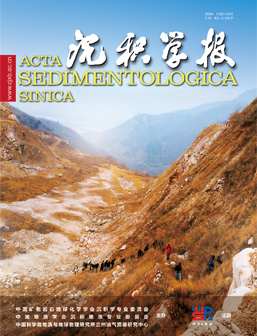Sedimentary facies and sedimentary evolution of Upper Paleozoic Yanghugou-Taiyuan Formation in the northwestern margin of Ordos Basin
doi: 10.14027/j.issn.1000-0550.2024.130
- Received Date: 2024-08-14
- Available Online: 2025-03-04
-
Key words:
- Key words: The northwestern margin of the Ordos Basin /
- yanghugou group-Taiyuan group /
- sedimentary facies /
- Provenance analysis /
- sedimentary environment and sedimentary evolution
Abstract: Abstract: [ Objective ] The Upper Paleozoic Yanghugou Formation to Taiyuan Formation in the northwestern margin of the Ordos Basin has a good prospect for oil and gas exploration. The strata are completely developed and continuous, with large thickness changes and various types of sedimentary facies. Defining the distribution characteristics of sand bodies and clarifying the law of sedimentary evolution directly affect the selection of preferred exploration zones for oil and gas. [ Method ] This paper takes the Yanghugou Formation to Taiyuan Formation in the northwestern margin of Ordos Basin as the target horizon. On the basis of previous studies, through typical field profile measurement, drilling core observation, paleocurrent direction analysis, logging data and test data analysis, the sedimentary environment and sedimentary facies type characteristics, sedimentary evolution and sedimentary model of the study area are studied.[ Result and conclusion ] The research shows that there are 19 lithofacies types and two sedimentary systems in the study area, including 4 sedimentary facies types, and 13 sedimentary microfacies are further divided. The Yanghugou Formation-Taiyuan Formation in the study area is mainly supplied by the two provenance systems of the Alxa ancient land in the northwest of the basin and the Yinshan ancient land in the northeast. The Dickinson triangle plot reveals that the tectonic background of the provenance area is dominated by the recycled orogenic belt. The characteristics of heavy mineral assemblages are clear. The northwestern margin of the basin has obvious affinity with the Alashan Group ( Ar3-Pt1 ), the Archean Jining Group ( Ar3 ), and the Wulashan Group ( Ar1-2 ). The ZTR index shows that the unstable minerals gradually decrease from north to south ; the analysis of paleocurrent direction also reflects the material sources from northwest to southeast and from northeast to southwest.On the basis of the above provenance analysis, paleo-sedimentary environment evolution and sedimentary facies type characteristics, it is clear that the main body of Yanghugou Formation-Taiyuan Formation in the study area is the coexistence stage of sea and land. During the sedimentary period of Yanghugou Formation, under the background of the revival of Helan aulacogen and the backlog of north-south tectonics, the sea water enters rapidly. The whole study area is controlled by the delta-clastic coastal sedimentary system. The northern source supply is sufficient, resulting in the development of tidal-controlled delta deposits in the north. Affected by tides and waves, tidal flat-barrier island-Desalination of lagoons-shelf sedimentary microfacies are developed in the south. During the deposition period of the Taiyuan Formation, the crust continued to sink and seawater invaded. During this period, the basin became the most widely distributed period of the sea area. The sedimentary environment was basically similar to that of the Yanghugou Formation. The overall performance was the coexistence of tidal-controlled delta, tidal flat, Desalination of lagoons-barrier island sedimentary environment, and the erosion range in the northern region was relatively reduced, the source supply continued to increase, and the tidal-controlled delta range extended wider to the south.
| Citation: | Sedimentary facies and sedimentary evolution of Upper Paleozoic Yanghugou-Taiyuan Formation in the northwestern margin of Ordos Basin[J]. Acta Sedimentologica Sinica. doi: 10.14027/j.issn.1000-0550.2024.130 |






 DownLoad:
DownLoad: